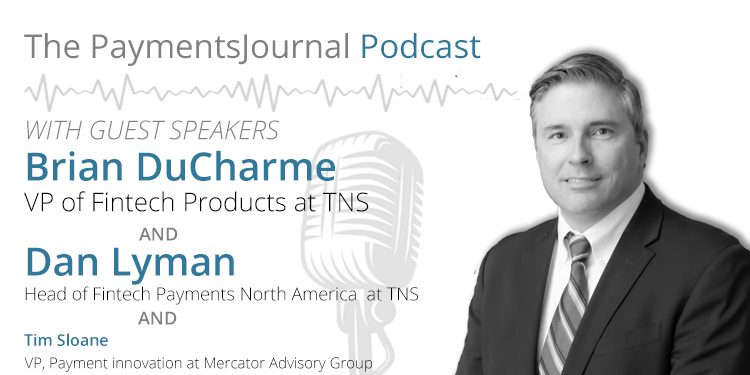The upcoming April 2021 EMV at the pump deadline for fuel merchants is rapidly approaching. Even so, many merchants remain unprepared to meet the deadline because switching to EMV at the forecourt is a costly and extensive process. That, on top of the loss of revenue due to the pandemic, makes upgrading a daunting task.
Fuel merchants that fail to meet the deadline open themselves up to card fraud liability and risk that can involve steep costs. Luckily, Transaction Network Services (TNS) has incentive programs available to help alleviate the costs so that merchants can upgrade now.
To learn more about how fuel merchants can reduce some of the upfront costs of adding support for EMV, PaymentsJournal sat down with TNS Payments Market leaders, Dan Lyman, Head of Fintech Payments North America and Brian DuCharme, VP of Fintech Products, who were joined by Mercator Advisory Group’s VP of Payments Innovation Tim Sloane.
A history of the EMV at the pump mandate
The installation of EMV-capable point of sale systems in the United States began in 2015, which was the deadline card issuers set for most merchants to upgrade to chip acceptance. Chip cards are significantly less prone to fraud than magnetic stripe cards. Merchants that failed to meet issuers’ deadline would become liable for card fraud losses, which are currently covered by card issuers.
Fuel merchants were given a later deadline of October 2017 because upgrading is more extensive for them than non-fuel merchants. When gas stations struggled to meet this deadline, it was extended to October 2020. Later, Visa granted a second deadline extension to April 17, 2021 due to the devastating and unexpected impact COVID-19 is having on gas stations.
Sloane noted that despite the lingering financial impacts of the pandemic on fuel merchants, it is unlikely that the EMV at the pump deadline will be extended a third time. But while some fuel station owners view upgrading as a costly and burdensome process, it doesn’t have to be. In fact, upgrading to EMV at the pump can benefit fuel merchants in more ways than simply mitigating fraud losses. It can also open up new revenue streams that ultimately outweigh the cost of upgrading.
Fuel merchants underestimate the potential losses of not upgrading to EMV
Owners and operators that haven’t upgraded their Automated Fuel Dispensers (AFD) by the upcoming April 2021 deadline are vulnerable to steep losses. Earlier this year, TNS and Mercator Advisory Group worked together and estimated that the liability risk at the pump for owners with a dozen sites could be as much as $207,000 in the first year alone.
For many fuel merchants, the magnitude of potential fraud losses came as news. “We have seen a lot of interest and there are companies that have reached out to [TNS] directly that wanted more information on how we calculated the cost of liability to owners and operators,” explained Lyman. “There is a bit of surprise over the magnitude of the potential liability that they will be subject to if they haven’t made the updates to their systems to support EMV.”
DuCharme agreed, adding that the imperative for fuel merchants “is to leverage updated capabilities not only to protect your transactions, but secure your business as well.” Fuel merchants that continue to rely on legacy transactions are likely to become victims of fraud.
Upgraded card readers bring other revenue stream opportunities
Upgrading fuel dispensers also bring opportunities for new revenue streams. “It’s an opportunity to turn that fuel dispenser into a rich consumer engagement tool,” said Lyman. “You’re sitting there for three or four minutes fueling your vehicle, and it’s an opportunity [for merchants] to better engage with you.”
This improved customer engagement could look like personalized content, convenience store sales options at the pump, and third party advertisements—all of which can bring in more money to the business.
Even before the COVID-19 pandemic, consumers showed a willingness to both receive merchandising messages at the AFD and to order convenience store items and have them delivered to the car. A report released by TNS in 2019 found that 61% of global consumers prefer to pay at the pump. Among 25 to 34-year-olds, 73% were interested in buying other items at the pump.
So, while the cost to upgrade the AFDs to EMV can be expensive, there are plenty of ways to create revenue streams that didn’t exist before to make up for the cost of investment.
The time for fuel merchants to shift to EMV is now, and TNS wants to help
Knowing that many fuel merchants are concerned about the upfront expense of upgrading, especially given that 2020 has put significant stress on merchants’ budgets, TNS recently announced an incentive program that combines a special pricing structure with deferred payments and the ability to choose features that can be customized for a fuel merchant‘s situation. Owners and operators can choose what features are important to them and determine their level of commitment to upgrading accordingly.
“We’re trying to defer as much of that expense or provide an opportunity for retailers to defer as much of that upfront expense as they can,” remarked Lyman. Beyond this program, TNS also has a Liability Sizing calculator that enables merchants to calculate what their liability could look like if they don’t upgrade.
With the EMV liability shift coming in just a few months, now is the time to take action. “If everyone waits until Q1 of next year, there’s going to be a strain on the resources that are required to do the upgrade,” Lyman concluded.
